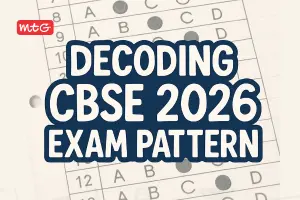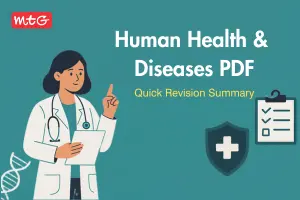The Principles of Inheritance and Variation Class 12 Biology MCQ with Answers has been organized according to the latest exam pattern in the CBSE Class 12 Biology syllabus for the upcoming CBSE Class 12 Biology Exam. Principles of Inheritance and Variation covers topics like mendelian genetics, chromosomal Theort of inheritance, Linkage and sex determination, Mutation and Genetic Disorders, These questions are designed to help students understand the concept thoroughly. They are helpful for revision and for grasping the concepts effectively. The MCQ questions for Chapter 4 Principles of Inheritance and Variation cover in-text book questions and important topics to help students assess their preparation level for CBSE board exams.
Recent – Reproductive Health Class 12 Biology MCQ With Solutions
CBSE Class 12 Chapter 4 Principles of Inheritance and Variation MCQs
Check below the CBSE Class 12 Biology MCQ with answers and Clear your idea of Chapter 4 Principles of Inheritance and Variation.
Q.1. In a pedigree analysis, a mutation in recessive gene would be expressed only in
(a) recessive homozygous condition
(b) recessive heterozygous condition
(c) dominant homozygous condition
(d) both (a) and (b)
Answer
Check Out – 11 Most Important Graphics of NCERT Class 12th Biology That You Cannot Miss
Q.2. Linked genes on homologous chromosome can be separated due to
(a) recombination (b) inversion (c) point mutation (d) none of these.
Answer
Practice More – CBSE Sample Paper Class 12 for 2023-24 Boards | FREE PDF from MTG
Q.3. The non-disjunction of 21st pair of autosomal chromosome leads to
(a) Sickle cell anaemia
(b) Klinefelter’s syndrome
(c) Turner’s syndrome
(d) Down’s syndrome.
Answer
(d): Down’s syndrome is usually due to non-disjunction of chromosome 21 that results in an embryo with three copies of chromosome 21 instead of the usual two. Prior to or at conception, a pair of 21st chromosomes in either the sperm or the egg fails to separate.
Q.4. In a Mendelian dihybrid cross, the phenotypic ratio obtained in F2 progeny is
(a) 9 : 7
(b) 9 : 3 : 3 : 1
(c) 9 : 3 : 4
(d) 1 : 2 : 2 : 4 : 1 : 2 : 1 : 2 : 1.
Answer
Q.5. The human blood groups are determined by
(a) 4 alleles in which IA is dominant.
(b) 3 alleles in which IA and IB are codominant.
(c) 3 alleles in which none is dominant.
(d) 3 alleles in which IA and i are codominant.
Answer
Q.6. In a cross between a male and female, both heterozygous for sickle cell anaemia gene, what percentage of the progeny will be diseased?
(a) 100% (b) 50% (c) 75% (d) 25%
Answer

Q.7. On selfing a heterozygous round and yellow seeded plants, the production of heterozygous for both the traits would be
(a) 9/16 (b) 3/16
(c) 1/16 (d) 4/16
Answer

Q.8. The production of gametes by the parents, formation of zygotes, the F1 and F2 plants, can be understood from a diagram called
(a) net square (b) bullet square (c) punch square (d) Punnett square.
Answer
Q.9. Which of the following does not follow Mendel’s law of dominance?
(a) Pisum sativum
(b) Mirabilis jalapa
(c) Lathyrus odoratus
(d) Oenothera lamarckiana
Answer
Q.10. The cross between white eyed female Drosophila and a red eyed male Drosophila would lead to the production of
(a) red eyed males and red eyed females
(b) white eyed males and white eyed females
(c) red eyed females and white eyed males
(d) white eyed males and red eyed females.
Answer
We hope the MCQs for the CBSE Class 12 Biology Chapter 4 on Principles of Inheritance and Variation are helpful for your board exam preparation.
Keep learning and stay updated with us for more CBSE exam updates.






























